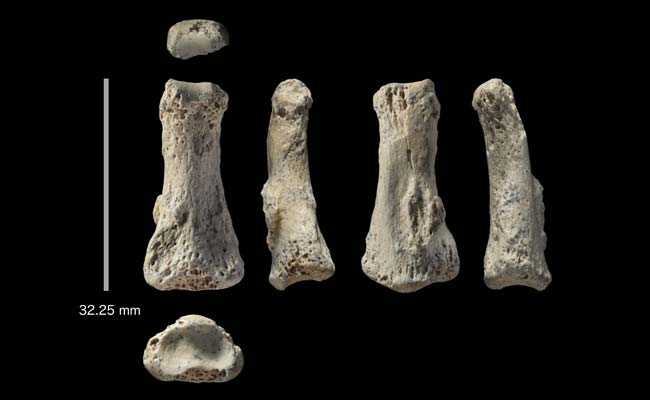INSUBCONTINENT EXCLUSIVE:
A fossil finger bone dating back about 90,000 years that was unearthed in Saudi Arabia's Nefud Desert is pointing to what scientists are
calling a new understanding of how our species came out of Africa en route to colonizing the world.Researchers said on Monday the middle
bone of an adult's middle finger found at site called Al Wusta is the oldest Homo sapiens fossil outside of Africa and the immediately
people were moving across the interior of the land, not coastlines (Reuters)While the Nefud Desert is now a veritable sea of sand, it was
hospitable when this individual lived - a grasslands teeming with wildlife alongside a freshwater lake
Our species first appeared in Africa roughly 300,000 years ago
Scientists previously thought Homo sapiens departed Africa in a single, rapid migration some 60,000 years ago, journeying along the
coastlines and subsisting on marine resources, said anthropologist Michael Petraglia of the Max Planck Institute for the Science of Human
History in Germany.This fossil of an intermediate phalanx bone, 1.2 inches (3.2 cm) long, suggests our species exited Africa far
earlier."This supports a model not of a single rapid dispersal out of Africa 60,000 years ago, but a much more complicated scenario of
And this find, together with other finds in the last few years, suggests Homo sapiens is moving out of Africa multiple times during many
windows of opportunity during the last 100,000 years or so," Petraglia said.The discovery also shows these people were moving across the
interior of the land, not coastlines, Petraglia added.Numerous animal fossils were discovered, including hippos, wild cattle, antelopes and
ostriches, University of Oxford archaeologist Huw Groucutt said
Bite marks on fossilized bones indicated carnivores lived there, too.Stone tools that hunter-gatherers used also were found
"The big question now is what became of the ancestors of the population to which the Al Wusta human belonged," Groucutt said."We know that
shortly after they lived, the rains failed and the area dried up
Did this population die out Did it survive further south in Arabia, where even today there are mountainous areas with quite high rainfall
and coastal regions which receive monsoonal rains" Groucutt added
"Or did the drying environment mean that some of these people were 'pushed' further into Eurasia, as part of a worldwide colonization"The
edited by TheIndianSubcontinent staff and is published from a syndicated feed.)

